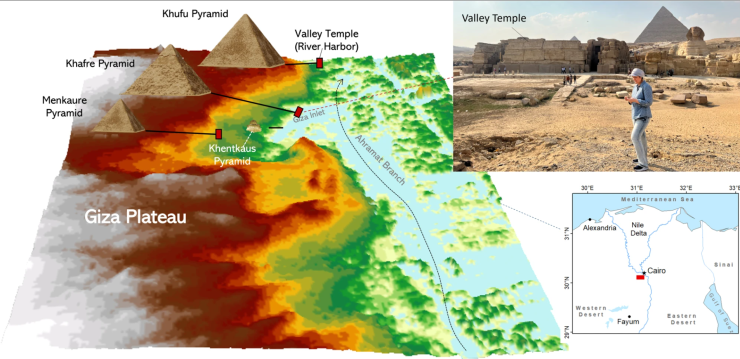Páni 
Na dně toho bývalého ramene Nilu musí být spousta
pokladů třeba i nějaká loď 🤔 
One of the great mysteries of the Egyptian pyramids solved
Categories: Nálezy nejenom s detektorem na blízkém východě
For many years, archaeologists believed that the ancient Egyptians must have used some sort of watercourse to transport the heavy stone blocks to build the pyramids. But until now, no one was sure of the location, shape, size or proximity of such a waterway. Last week, an international research team announced a discovery that sheds light on this mystery.
According to a study by scientists at the University of North Carolina presented in the journal Nature, the pyramids were built along a long-defunct ancient arm of the Nile that is now hidden beneath high layers of desert sand and farmland. To identify the arm, the experts combined several methods such as radar satellite images, historical maps, geophysical surveys and sediment sampling.
The research revealed that many thousands of years ago, the extinct river arm measured approximately 64 kilometres in length, was 200 metres wide, in some places up to 700 metres, and ran right past the pyramids. In addition, radar images have revealed other ancient structures near the pyramids. They also gave the newly discovered river arm its Arabic name: "Ahramat".
The discovery of the extinct river branch helps to explain why the pyramids are found in such density between Giza and Lisht, a now inhospitable area of the Sahara. Ahramat bordered 31 pyramids that were built between 4,700 and 3,700 years ago. During this period, the river arm served as a key transport route for heavy building materials, and the surrounding area teemed with life.
"Finding the actual river branch and evidence that it was used to transport heavy blocks and construction equipment helps us better understand how the pyramids were built," said Dr. Suzanne Onstine, co-author of the study, adding that the Nile and its arms were strategically used to facilitate the construction of monumental structures, demonstrating the high level of ancient Egyptian engineering.
The royal pyramids in ancient Egypt were not isolated monuments, but formed interconnected complexes with several other structures. In addition to the pyramid itself, there was also a back temple next to the pyramid, a valley temple further away from the pyramid on the banks of the Ahramat, and a long sloping causeway that connected the two temples. The causeway formed an elevated walkway that provided access to the pyramid and was part of its religious aspects. The study found that many such walkways ran perpendicular to the course of the Ahramat branch and ended directly on the bank.
In Egyptian pyramid complexes, valley temples at the end of walkway embankments functioned as river ports. They served as an entry point for visitors on the river ceremonial route to the pyramid. Five such valley temples still partially survive today, but experts say many others lie buried in the sand along the riverbank, awaiting discovery.
Roman Nemec
Sources: bbc.com, nature.com

Pathways leading from the pyramids to the extinct Nile arm of Ahramat
 an international team from the US, Australia and Egypt
an international team from the US, Australia and Egypt
 The watercourse of the ancient Ahramat branch
The watercourse of the ancient Ahramat branch
The article is included in categories:
- Archive of articles > Archaeology > Finds and rescue research abroad > Nálezy nejenom s detektorem na blízkém východě
Post
Zajímavé 
Všechno sou to jenom jejich domněnky vykonstruhovaný tak aby to potvrdilo nebo sedělo na jejich domnělé teotie o vzniku a využití pyramid. 🤘🏻
Souhlas a platí to i pro české archeology působící na našem území.








